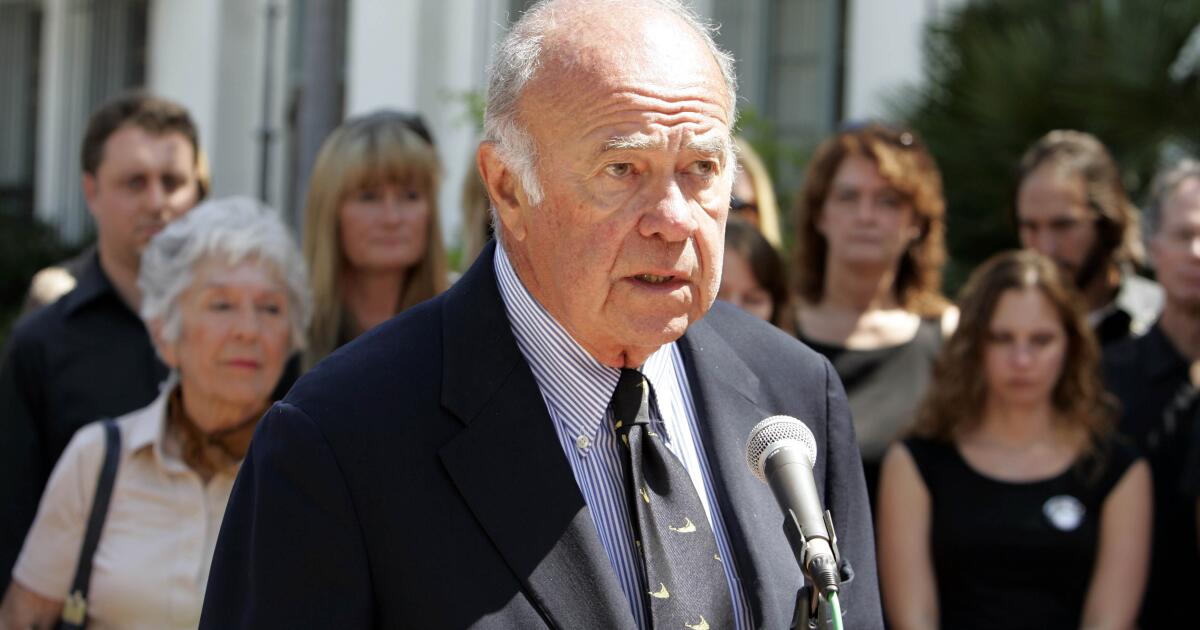Reagan biographer, legendary California journalist Lou Cannon dies
Journalist and author Lou Cannon, who was widely considered the nation’s leading authority on the life and career of President Reagan, died Friday in a Santa Barbara hospice. He was 92.
His death was caused by complications from a stroke, his son Carl M. Cannon told the Washington Post, where his father served for years as a White House correspondent.
The elder Cannon covered Reagan’s two-term presidency in the 1980s, but his relationship with the enigmatic Republican leader went back to the 1960s, when Reagan moved from acting to politics.
Cannon interviewed Reagan more than 50 times and wrote five books about him, but still struggled to understand what made Reagan who he was.
“The more I wrote,” Cannon told the Reno Gazette-Journal in 2001, “the more I felt I didn’t know.”
Cannon was born in New York City and raised in Reno, Nev., where he attended the University of Nevada in Reno and later San Francisco State College.
After service in the U.S. Army, he became a reporter covering Reagan’s first years as governor of California for the San Jose Mercury News. In 1972, Cannon began working for the Washington Post as a political reporter.
Cannon recalled first encountering Reagan in 1965 while assigned to cover a lunch event for reporters and lobbyists and being surprised by Reagan’s command of the room when he spoke.
Reagan was beginning his campaign for governor by proving he could answer questions and “was not just an actor reading a script.” At the time, the word actor was “a synonym for airhead. Well, Reagan was no airhead,” Cannon said in a 2008 interview at the Richard Nixon Presidential Library & Museum.
To Cannon’s surprise, the reporters and lobbyists mobbed Reagan after the event was over to get his autograph. Cannon introduced himself.
“I remember those steely eyes of his. I thought he had this great face, but his eyes are tough,” Cannon said. “His eyes are really something.”
On the phone later, Cannon’s editor asked him what he thought of Reagan. He replied, “I don’t know anything, but if I were running this thing, why would anybody want to run against somebody that everybody knows and everybody likes? Why would you want him to be your opponent?
“I predicted that Reagan was going to be president, but I didn’t have any idea he was going to be governor,” Cannon said. “I was just so struck by the fact that he impacted on people as, not like he was a politician, but like he was this celebrity, force of nature that people wanted to rub up against. It was like seeing Kennedy again. They wanted the aura, the sun.”
In 1966, Reagan was elected governor by a margin of nearly 1 million votes and Cannon found himself “writing about Ronald Reagan every day.”
Reagan’s political opponents in California and Washington consistently underestimated him, assuming the former actor could be easily beaten at the ballot box, Cannon said. Reagan ran for president unsuccessfully twice, but had the will to keep trying until he won — twice.
“Reagan was tough, and he was determined, and you couldn’t talk him out of doing what he wanted to do,” Cannon said. “Nancy couldn’t talk him out of what he wanted to do, for god’s sakes. And certainly no advisor could or no other candidate. Ronald Reagan wanted to be president of the United States.”
Cannon’s first book on the president, “Reagan,” was published in 1982. In 1991 he published “President Reagan: The Role of a Lifetime,” which is regarded as a comprehensive biography of the 40th president.
Cannon also authored a book about the LAPD and the 1992 Rodney King riots in Los Angeles, in addition to chronicling a range of tales over the years, including the federal bust of a 1970s heroin kingpin in Las Vegas.
Mr. Cannon’s first marriage, to Virginia Oprian, who helped him research his early books, ended in divorce. In 1985, he wed Mary Shinkwin, the Washington Post said. In addition to his wife, he is survived by three children.
